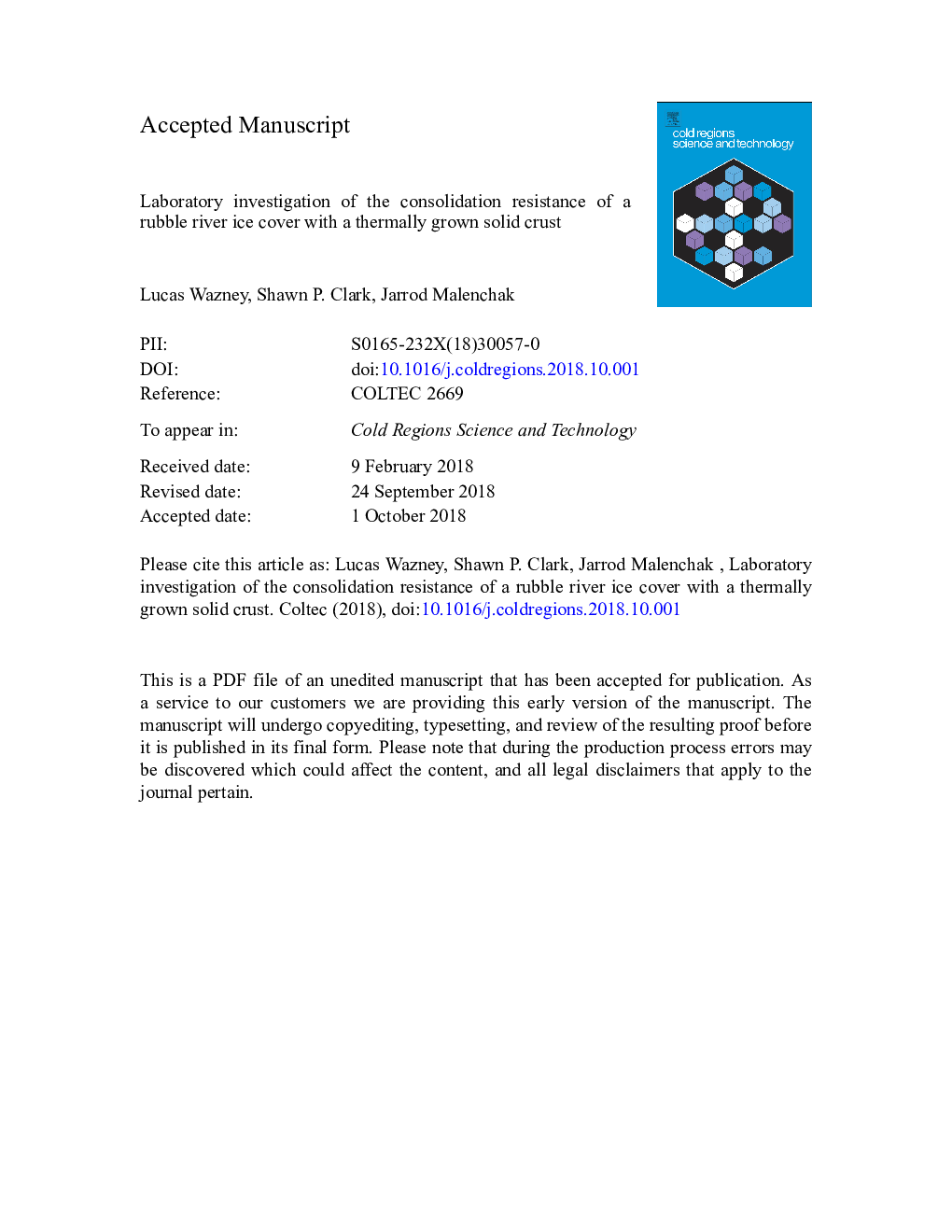| Article ID | Journal | Published Year | Pages | File Type |
|---|---|---|---|---|
| 11016744 | Cold Regions Science and Technology | 2019 | 40 Pages |
Abstract
River ice behaviour during freeze-up depends on a complex relationship between dynamic and thermal processes. This study investigates the effects of cold ambient air temperatures on the ability of a rubble ice cover to resist consolidation (mechanical thickening) under externally applied forces. An experimental apparatus was constructed in a refrigerated room at the University of Manitoba. The apparatus consists of a translating plate that was used to deform a floating rubble ice cover in a waterproof tank. Prior to resistance testing, the ice cover was exposed to an ambient air temperature of â10.5â¯Â°C for a specified duration. During this time, the interstitial water between the rubble pieces at the surface froze, creating a solid crust that solidified a portion of the rubble surface. Instruments were used to measure the displacement of the plate and resisting force generated by the ice cover during the resistance testing phase. Results indicate that even short durations of freezing (less than two hours) have a considerable impact on the peak resistance of an ice cover. The force required to consolidate a 155â¯mm thick rubble ice cover exposed to an ambient air temperature of â10.5â¯Â°C for two hours was over 30 times that of an equivalent unfrozen accumulation of rubble ice. The peak resistance of a cover comprising rubble ice with a solid crust was found to be much greater than the sum of the individual contributions of the rubble and solid ice layers considered separately. Results from this study highlight the significant effect of thermal processes on ice dynamics, and can inform future research efforts in incorporating these processes into numerical river ice models.
Related Topics
Physical Sciences and Engineering
Earth and Planetary Sciences
Earth and Planetary Sciences (General)
Authors
Lucas Wazney, Shawn P. Clark, Jarrod Malenchak,
